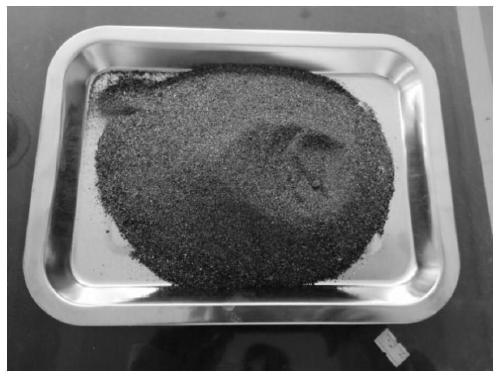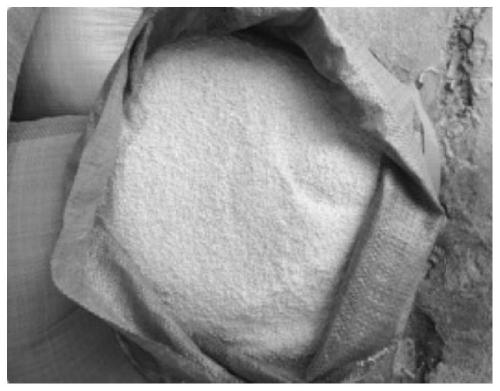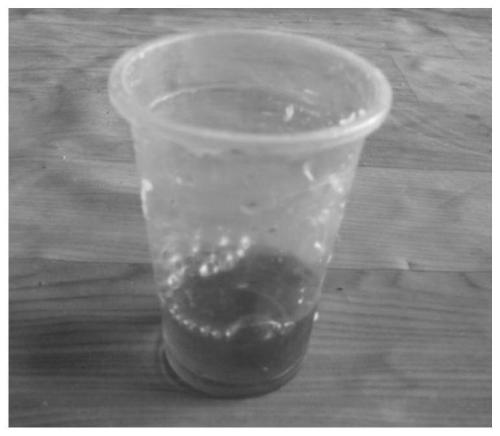Preparation method for cement-based porous material comprising iron tailings and vitrified beads
A technology of vitrified microbeads and porous materials, applied in ceramic products, applications, household appliances, etc., can solve the problems of low strength, easy sinking, uneven distribution of materials, etc., and achieve easy large-scale production and convenient on-site construction , the effect of reducing production costs
- Summary
- Abstract
- Description
- Claims
- Application Information
AI Technical Summary
Problems solved by technology
Method used
Image
Examples
Embodiment 1
[0057] The mix ratio is designed as follows:
[0058] Cement slurry mix ratio design: Ordinary Portland cement: Sulphoaluminate cement: Fly ash: Iron tailings slag: Vitrified microbeads: Water = 1:0.25:0.625:1.25:0.114:1.24 (mass ratio);
[0059] Cement paste: foam = 1:1.6 (volume ratio).
[0060] Preparation:
[0061] (1) Calculate the amount of raw materials according to the pre-determined mix ratio and the demand for cement-based porous materials, and then weigh cement, fly ash, iron tailings slag, vitrified beads, slurry mixing water, and foam preparation according to the calculated amount Water, foaming agent and other raw materials;
[0062] (2) foaming agent and water are mixed uniformly in a mass ratio of 1:70;
[0063] (3) Add water into the mixing bucket first, then add the weighed cement, fly ash, iron tailing slag, and vitrified microspheres into the bucket, and stir with an impact mixer for about 2 minutes until uniform;
[0064] (4) Start the foaming machine,...
Embodiment 2
[0077] The mix ratio is designed as follows:
[0078] Cement slurry mix ratio design: Ordinary Portland cement: Sulphoaluminate cement: Fly ash: Iron tailings slag: Vitrified microbeads: Water = 1:0.25:0.625:1.25:0.114:1.24 (mass ratio);
[0079] Cement paste: foam = 1:4.5 (volume ratio).
[0080] The specific preparation, molding, maintenance and testing methods are the same as in Example 1.
[0081] Performance measurement results:
[0082] ρ 湿 =512kg / m 3 , 7d compressive strength: 0.33MPa, 28d compressive strength: 0.51MPa, thermal conductivity λ=0.069W / (m 2 · K).
Embodiment 3
[0084] The mix ratio is designed as follows:
[0085] Cement slurry mix ratio design: Ordinary Portland cement: Sulphoaluminate cement: Fly ash: Iron tailings slag: Vitrified microbeads: Water = 1:0.125:0.3125:0.125:0.039:0.70.
[0086] Cement paste: foam = 1:1.1 (volume ratio).
[0087] The specific preparation, molding, maintenance and testing methods are the same as in Example 1.
[0088] Performance measurement results:
[0089] ρ 湿 =990kg / m 3 , 7d compressive strength: 2.68MPa, 28d compressive strength: 3.77MPa, thermal conductivity λ=0.115W / (m 2 · K).
PUM
| Property | Measurement | Unit |
|---|---|---|
| specific surface area | aaaaa | aaaaa |
| density | aaaaa | aaaaa |
| compressive strength | aaaaa | aaaaa |
Abstract
Description
Claims
Application Information
 Login to View More
Login to View More - R&D
- Intellectual Property
- Life Sciences
- Materials
- Tech Scout
- Unparalleled Data Quality
- Higher Quality Content
- 60% Fewer Hallucinations
Browse by: Latest US Patents, China's latest patents, Technical Efficacy Thesaurus, Application Domain, Technology Topic, Popular Technical Reports.
© 2025 PatSnap. All rights reserved.Legal|Privacy policy|Modern Slavery Act Transparency Statement|Sitemap|About US| Contact US: help@patsnap.com



